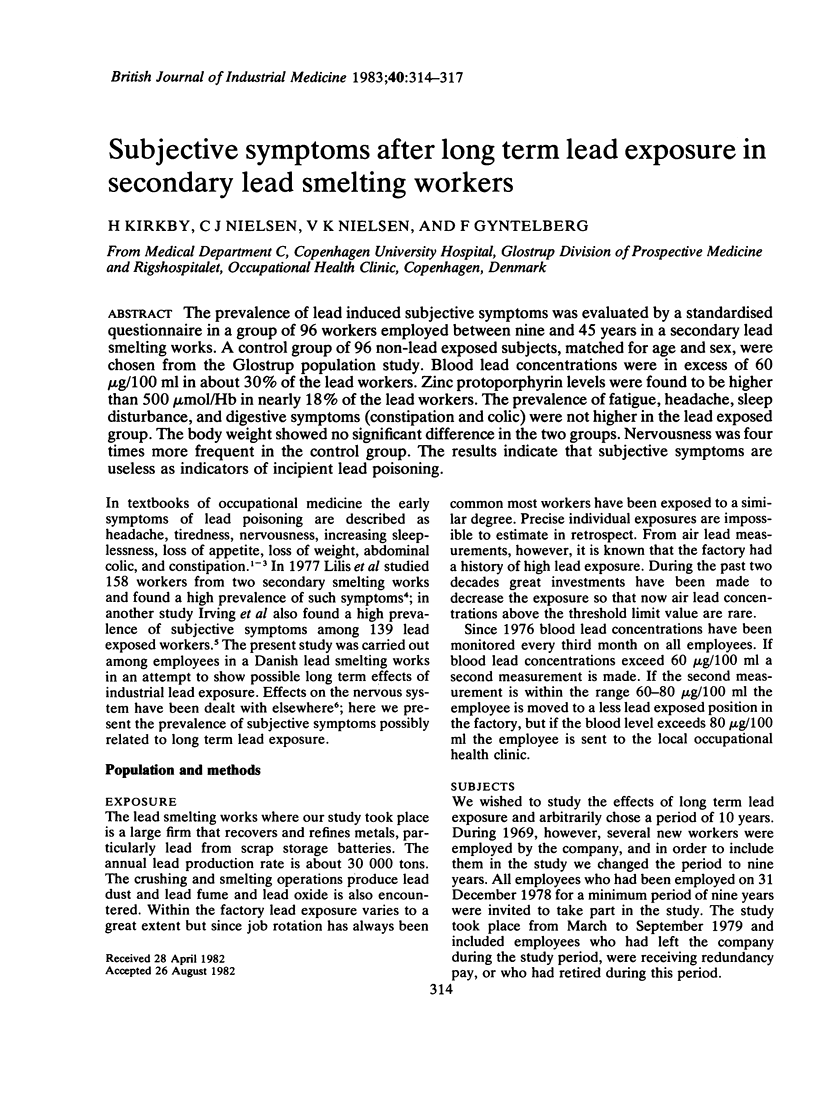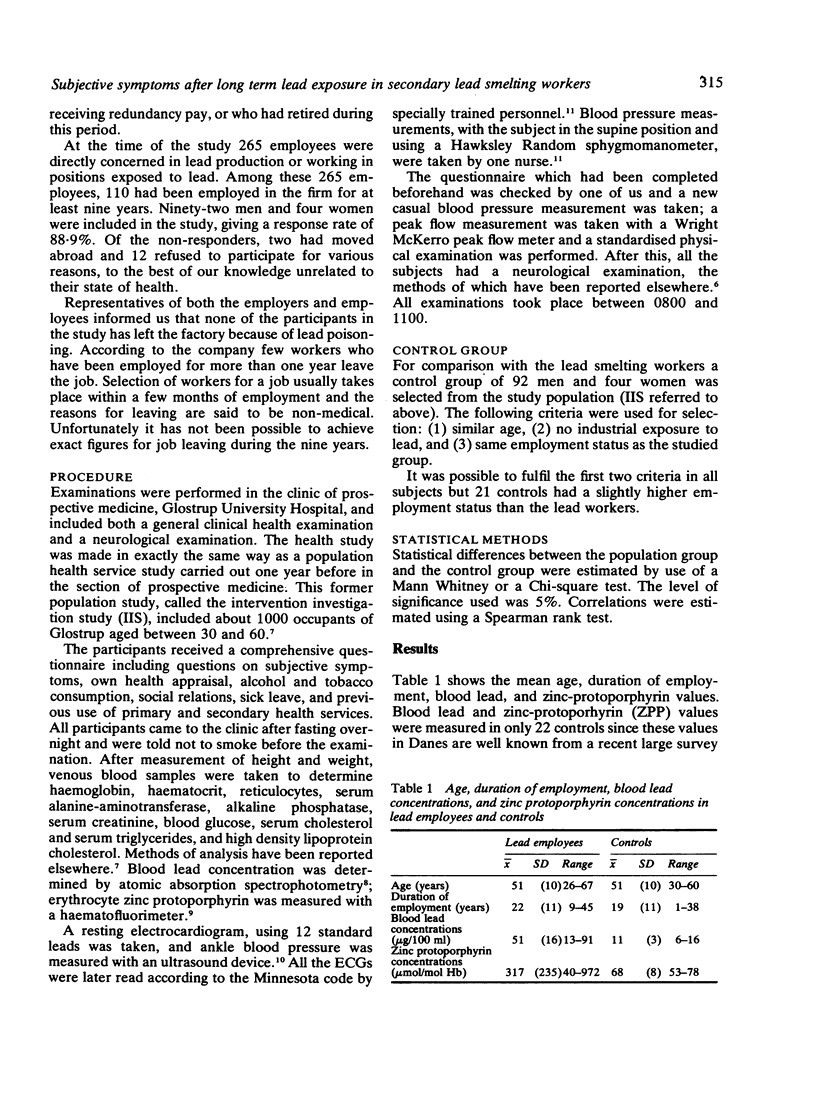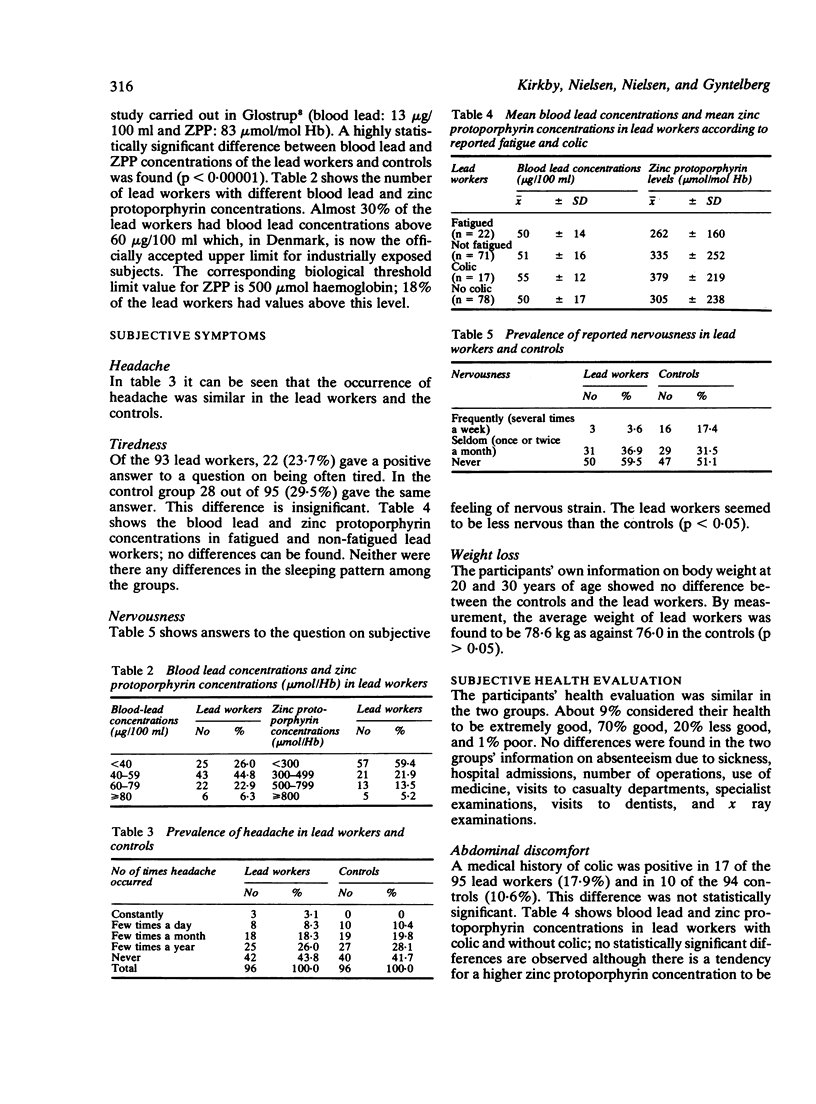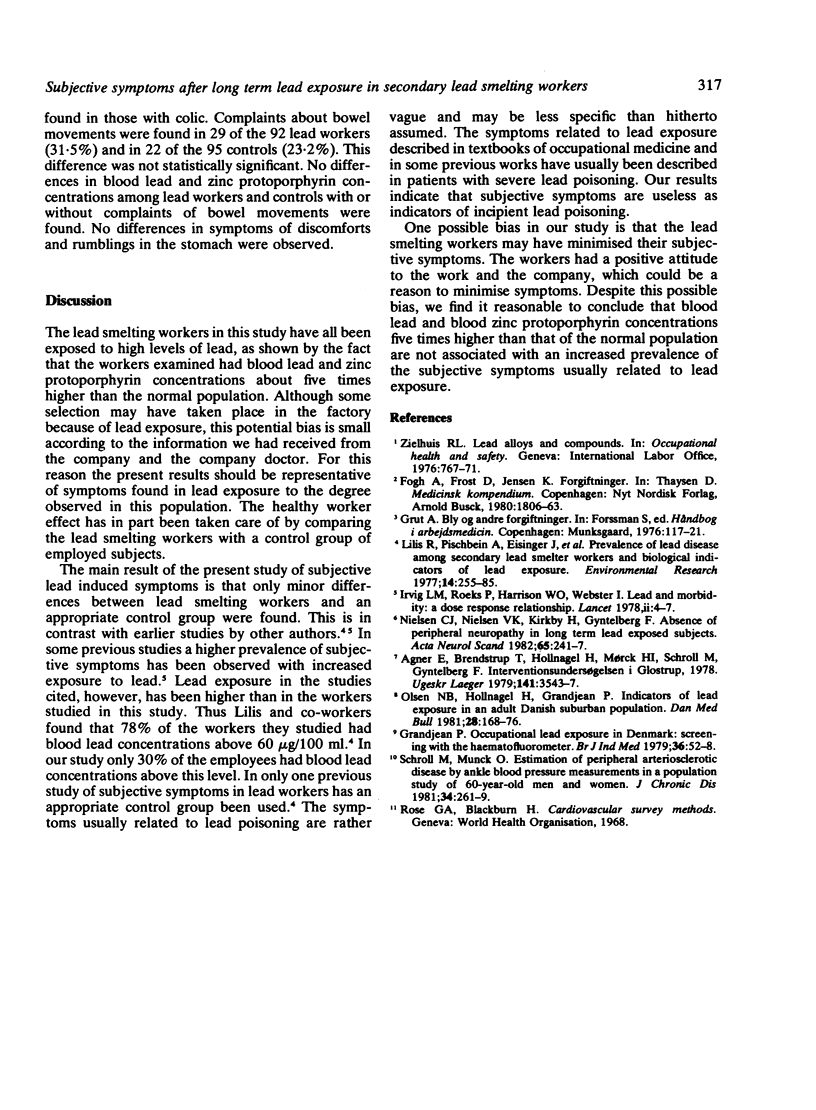Abstract
The prevalence of lead induced subjective symptoms was evaluated by a standardised questionnaire in a group of 96 workers employed between nine and 45 years in a secondary lead smelting works. A control group of 96 non-lead exposed subjects, matched for age and sex, were chosen from the Glostrup population study. Blood lead concentrations were in excess of 60 micrograms/100 ml in about 30% of the lead workers. Zinc protoporphyrin levels were found to be higher than 500 mumol/Hb in nearly 18% of the lead workers. The prevalence of fatigue, headache, sleep disturbance, and digestive symptoms (constipation and colic) were not higher in the lead exposed group. The body weight showed no significant difference in the two groups. Nervousness was four times more frequent in the control group. The results indicate that subjective symptoms are useless as indicators of incipient lead poisoning.
Full text
PDF



Selected References
These references are in PubMed. This may not be the complete list of references from this article.
- Agner E., Brendstrup T., Hollnagel H., Mørck H. I., Schroll M., Gyntelberg F. Interventionsundersøgelsen i Glostrup 1978. En model for forebyggelse af iskaemisk hjertesygdom på lokalsygehus--metode og deltagelse. Ugeskr Laeger. 1979 Dec 17;141(51):3543–3547. [PubMed] [Google Scholar]
- Grandjean P. Occupational lead exposure in Denmark: screening with the haematofluorometer. Br J Ind Med. 1979 Feb;36(1):52–58. doi: 10.1136/oem.36.1.52. [DOI] [PMC free article] [PubMed] [Google Scholar]
- Lilis R., Fischbein A., Eisinger J., Blumberg W. E., Diamond S., Anderson H. A., Rom W., Rice C., Sarkozi L., Kon S. Prevalence of lead disease among secondary lead smelter workers and biological indicators of lead exposure. Environ Res. 1977 Oct;14(2):255–285. doi: 10.1016/0013-9351(77)90037-8. [DOI] [PubMed] [Google Scholar]
- Nielsen C. J., Nielsen V. K., Kirkby H., Gyntelberg F. Absence of peripheral neuropathy in long-term lead-exposed subjects. Acta Neurol Scand. 1982 Apr;65(4):241–247. doi: 10.1111/j.1600-0404.1982.tb03083.x. [DOI] [PubMed] [Google Scholar]
- Olsen N. B., Hollnagel H., Grandjean P. Indicators of lead exposure in an adult Danish suburban population. Dan Med Bull. 1981 Sep;28(4):168–176. [PubMed] [Google Scholar]
- Schroll M., Munck O. Estimation of peripheral arteriosclerotic disease by ankle blood pressure measurements in a population study of 60-year-old men and women. J Chronic Dis. 1981;34(6):261–269. doi: 10.1016/0021-9681(81)90031-x. [DOI] [PubMed] [Google Scholar]


